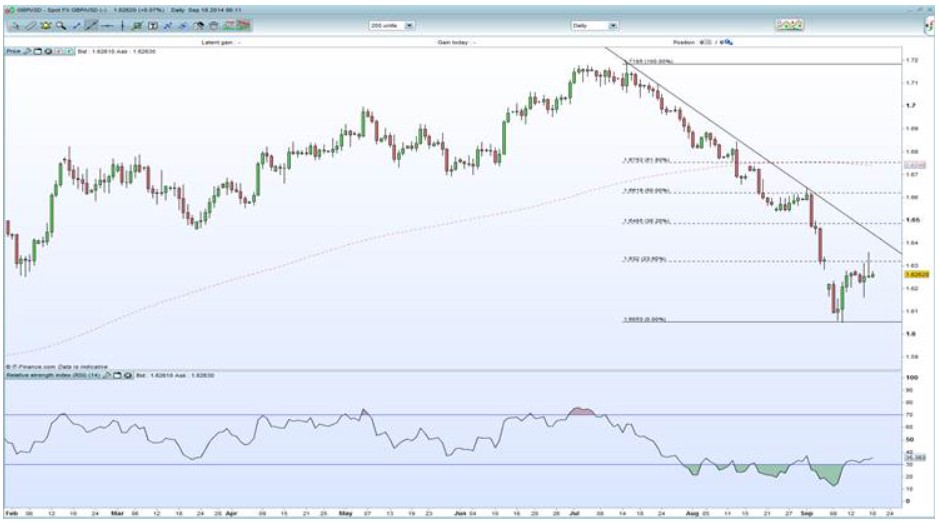
Global markets are now entering the eye of the storm as far as event risk is concerned. The first major event of the week has already brought some volatility, with the FOMC meeting resulting in the USD extending its gains. It has been all about the USD over the past 24-hours or so as investors reacted to the outcome from the FOMC meeting. While the initial comments were mostly construed as dovish, it is clear from the price action there has been a hawkish shift in sentiment.
Initially, focus was on the fact the Fed maintained its line, saying it will likely maintain the current target range for the federal funds rate for a considerable time after the asset purchase program ends. Many analysts were expecting this to be revised to a more data-dependant outcome, rather than a timeline-dependant one.
The key was the dot plot analysis, which showed a 0.25% upward revision to the median fed funds rate expectation for the end of 2015 and a 0.375% upward revision for the end of 2017. Additionally, fed member Fisher joined Plosser in dissenting.
Overall, it seems many analysts remain in the June hike camp, with a slight possibility we might see an earlier hike. However, data will have to accelerate significantly, given the fed said inflation continues to run below its 2% longer-term goal.
Janet Yellen speaks again later today on the importance of asset building for low and middle-income households, and this might give further insight on key themes such as employment, wage inflation and CPI.
Japan outperforms Asia
Looking around the region, there has mostly been positive performance in key markets. The Nikkei has predictably been a standout, given USD/JPY knocked through significant barriers on the back of the FOMC meeting.
USD/JPY traded as high as 108.68 and the Nikkei finally knocked through the 16,000 barrier. The Nikkei traded to a high of 16,320 back in January and I feel that this will be the key level to watch in the near term.
China produced another set of disappointing data, with property prices for August even worse than the woeful July reading. Property prices dropped in 68 of 70 cities – certainly justifying the stimulus deployed this week. It is also consistent with the sharp drop off in activity we’ve been seeing recently. This weakness in property prices will remain a key concern for China in the near term.
LTROs and Scottish referendum in focus
Ahead of the European open, we’re calling the major European bourses firmer. There are two key issues to look out for, including the Scottish referendum and the deployment of the TLTRO announced in June.
This LTRO will give eligible banks €400 billion liquidity. The key will be how much of this is taken up. Naturally, a big uptake should be positive for risk but could give the single currency further headaches.
Voting on the Scottish referendum closes at 10pm UK time (7:00 AEST), at which point the first exit polls will be released. Many feel the result is too close to call, but what we do know is it’s likely to be a binary event.
Essentially, a ‘yes’ vote is likely to weigh heavily on the sterling and equities. A ‘no’ vote should result in a relief rally and is likely to be positive for the sterling and equities. However, even if we get a ‘no’ vote, I feel the recovery will be capped by the fact this whole situation is likely to give rise to further structural issues in the not-too-distant future. The downtrend on cable remains intact and could be used as a reference for shorts. All the other data on the calendar is likely to be overlooked today.
(GBP/USD steady ahead of the referendum)
